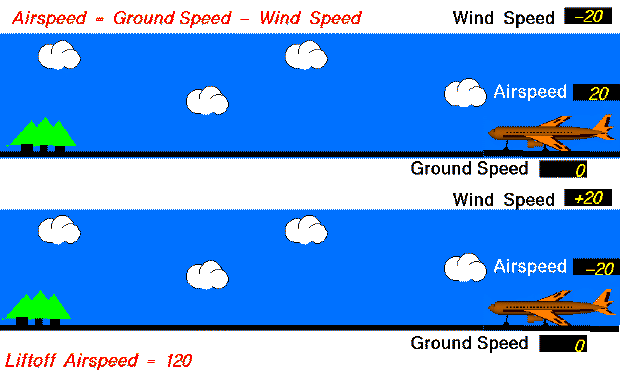

Here's a page for you to explore the relative velocity between an aircraft in flight, the ground, and the air through which the airplane moves. In this animation, the white clouds move relative to the ground at the wind speed, the airplane moves relative to the ground at the ground speed, and the airplane moves relative to the air at the airspeed. Airspeed is the important velocity for the generation of lift and drag. These two aircraft are going to take-off and both have to reach 120 mph of airspeed to generate enough lift to take off. The top aircraft flies into a 20 mph wind; the bottom aircraft flies with a 20 mph tail wind. The accelerations are the same, so they have identical ground speeds which change as they move down the runway. About halfway down the runway, the ground speed of both aircraft is 100 mph. At that location, the top aircraft has an airspeed of 120 mph (Airspeed = Ground Speed - Wind Speed; 120 = 100 - (-20)), while the lower aircraft has an airspeed of only 80 mph (80 = 100 - 20). So the plane flying into the wind takes off first. The lower aircraft does not have sufficient airspeed until its groud speed is 140 mph (120 = 140 - 20). This occurs near the end of the runway just before the trees! More information about these velocities is given on the Relative Velocity Slide.

Last Updated Thu, May 13 02:38:24 PM EDT 2021
by Tom Benson